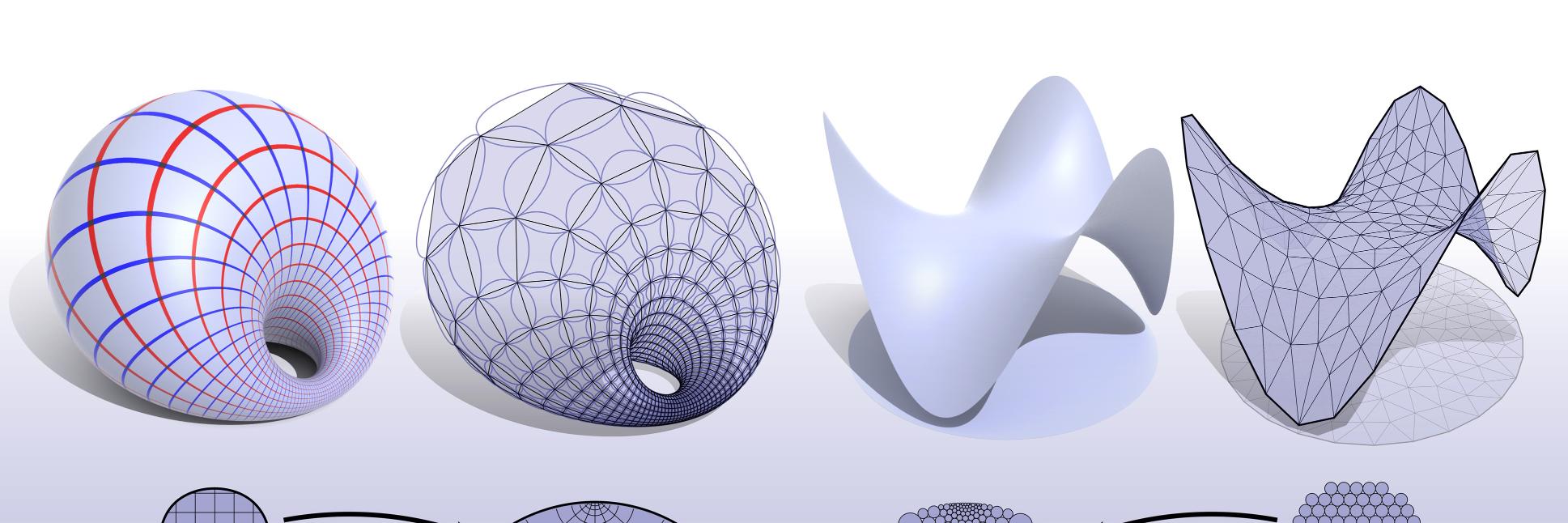
Keenan Crane
@keenanisalive
Digital Geometer, Assoc. Prof. of Computer Science & Robotics @CarnegieMellon @SCSatCMU and member of the @GeomCollective. There are four lights.
I work on fundamental algorithms for geometric and visual computing. Here's a taste of our group's work, as a list of "explainer" threads posted on Twitter/X over the years. (🧵) For a whole lot more, check out: cs.cmu.edu/~kmcrane/ geometry.cs.cmu.edu

Inner dialogue upon seeing this post: - “These are figures I made.” - “No wait… some stranger is trying to rip off my style!” - “No… this is my awesome student Nicole—who I have apparently trained in the ways of the Force! 🤩” (Go check out @nicolefeng_'s beautiful stuff!)
While making some figures for SGI* this year, I made some "behind the scenes" footage of how they get made: youtube.com/playlist?list=… Basically a video extension of cs.cmu.edu/~kmcrane/faq.h… ("figures?") *SGI is a great program run by @JustinMSolomon & deserves more funding
Awesome work by two awesome former students. 🏁🦖
Logarithmic maps are incredibly useful for algorithms on surfaces--they're local 2D coordinates centered at a given source. @yousufmsoliman and I found a better way to compute log maps w/ fast short-time heat flow in "The Affine Heat Method" presented @ SGP2025 today! 🧵
Working on a Walk on Spheres tutorial for #SIGGRAPH2025, and love the ads I'm getting served. 😂 Stay tuned for more…👣

Making good on this promise—in the fastest turnaround time ever—my collaborator Etienne Corman has just posted MATLAB code for #RectangularSurfaceParameterization here: github.com/etcorman/Recta… (C++ version is still in the works…)
Code and other information coming soon; for now you can read the paper here: cs.cmu.edu/~kmcrane/Proje… And find some supplemental information—including pseudocode—here: cs.cmu.edu/~kmcrane/Proje…
Very happy that Jiří Minarčík (@irukaminarcik) will join our group, the @GeomCollective, as a @FulbrightPrgrm visiting scholar! 🥳 Jiří is a world expert in space curves, and one of the core contributors to @UsePenrose. Check out his beautiful work here: minarcik.com

In our new paper, we extend style transfer to space curves. We recover the unstyled guide via a length-preserving CSF, align it using a modified Fréchet distance, and synthesize geometry through patch graph traversal. No training data needed. → Examples and paper below.
For folks in the @siggraph community: You may or may not be aware of the controversy around the next #SIGGRAPHAsia location, summarized here: cs.toronto.edu/~jacobson/webl… If you're concerned, consider signing this letter: docs.google.com/document/d/1ZS… via this form docs.google.com/forms/d/e/1FAI…

Shout out today to parents, grandparents, aunts, uncles, or anyone else who helps raise a kid. It didn’t really click until I was a dad: without parents, human civilization ends. Only with good parents does the future look bright. So, give a nod to anyone putting in the work.

Generative art circa 2004. Inspired by Piet Mondrian and rendered in acrylic. (Currently on display at my grandmother’s house)

Putting Rigid Bodies to Rest (news.ycombinator.com/item?id=441271…)
Fun new paper at #SIGGRAPH2025: What if instead of two 6-sided dice, you could roll a single "funky-shaped" die that gives the same statistics (e.g, 7 is twice as likely as 4 or 10). Or make fair dice in any shape—e.g., dragons rather than cubes? That's exactly what we do! 1/n
Anyone interested in 3D printing some funky dice—like a "fair dragon" which can land in three different ways, or a single die equivalent to to 2D6? We've now put printable STL files online: cs.cmu.edu/~kmcrane/Proje… More info here: hbaktash.github.io
Fun new paper at #SIGGRAPH2025: What if instead of two 6-sided dice, you could roll a single "funky-shaped" die that gives the same statistics (e.g, 7 is twice as likely as 4 or 10). Or make fair dice in any shape—e.g., dragons rather than cubes? That's exactly what we do! 1/n